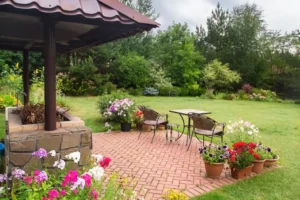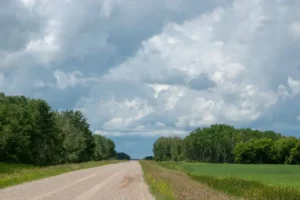A patio may not be something you consider during the winter, especially if it is cold and snowy. Many people love a patio on a warm sunny afternoon. Sipping iced lemonade or tea outside is a great way to relax. Your real estate agent will want to capture this picture when you list your home for sale.
Patios can be appealing because they create a feeling of openness, freedom and peace. They can also seem to increase the amount of living space when it is nice out.
When you list your house, you can set out some simple yet comfortable patio furniture on your patio. You might be surprised to find that potential buyers will sit down and consider your home. Good! Allow them to soak up the energy in your home. It’s the way it feels. It allows them to relax. Place some brochures on the side table. You could even offer a book. You would be surprised at what these buyers choose. You’ve likely piqued the interest of your potential buyers if they are enjoying themselves on your patio.
What if you already have a patio but don’t have one in your backyard? Is it still worth investing money into one? It depends on your budget, but having a deck or patio – an outdoor space to relax in – is definitely a plus.
Here are some tips on how to create that patio area.
Avoid a concrete jungle
You don’t want to fill up your entire backyard with a concrete slab if you have a smaller yard. Why? Also, greenery is appealing. You want the patio to be proportional to your yard. You don’t want a large yard with a tiny patio, nor vice versa.
Easy Access
It is best to place your patio near an entrance to the house, usually the kitchen. It is important to have the patio close to the entryway of the home, usually the kitchen. This will allow people who are grilling outside or eating outdoors easy access to the kitchen without having them walk through another room.
Patios should also be placed in areas with some privacy. Patios are most attractive when you can relax, enjoy a meal, a book or a conversation without feeling watched. The backyard is the most common location.
Maintain it well
A well-maintained patio is often a plus for buyers and can increase the value of your home.
Cover or not to cover? When homeowners install patios, many wonder if adding a cover will increase the value of their house. This depends on a number of factors, such as whether the patio is built and maintained well, if it is aesthetically pleasing and does not block views, etc. When it is well-crafted and maintained, the patio’s covering and construction can add to the appeal of the home. This could lead to a quicker sale and a higher price.
Original Blog: https://realtytimes.com/consumeradvice/sellersadvice/item/37371-patio-appeal-may-add-value-to-your-home?rtmpage=null







